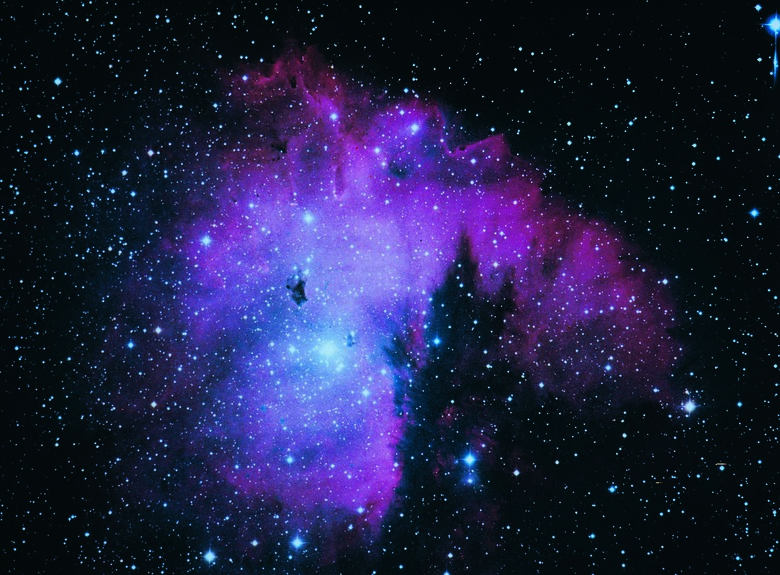Example Of A White Dwarf Star
Some stars become white dwarfs near the ends of their lifetimes. A star in this phase of its existence is superdense; it can have the mass of the sun yet be only as large as the Earth. One of the first white dwarf stars ever observed is the companion to Sirius, in the constellation Canis Major. The two stars, which form a binary system, are known as Sirius A and Sirius B.
Formation
Formation
In the course of its lifetime, a star such as the sun eventually burns up all its nuclear fuel, and as it does, the force of gravity causes it to collapse. At the same time, its outer layers expand, and the star becomes a red giant. The temperature at the core of a star in this stage remains high, and the core becomes superdense as gravity continues to compress it and the nuclear processes begin to convert helium into carbon and heavier elements. The outer layer of the red giant eventually expands into a planetary nebula, leaving behind the hot, dense core, which is a white dwarf star.
Characteristics
Characteristics
By the time a red giant has become a white dwarf, fusion has ceased, and the star doesn't have enough energy to counteract the force of gravity. Consequently, matter becomes so compressed that all the energy levels are filled with electrons, and quantum mechanical principles keep it from shrinking further. Because of this process, there is limit to the mass of white dwarf: 1.4 times the mass of the sun. The surface gravity is 100,000 times what it is on Earth, and the atmosphere, which is mostly light gases such as hydrogen and helium, is pulled very close to the surface.
Sirius B
Sirius B
Astronomer and mathematician Friedrich Bessel hypothesized the existence of Sirius B in 1844, based on observations of the much more visible Sirius A. Astronomer Alvan Clark was the first to see it in 1862. Observing it is difficult because it is closer to Sirius A than Mercury is to the sun, and it's 8,200 fainter than the Sirius A. With a diameter only 0.008 that of the sun, it is even smaller than Earth, but its mass is 97.8 percent to 103.4 percent that of the sun. It is so dense that 1 cubic inch of its material would weigh 13.6 metric tons (15 tons) on Earth.
The Helix Nebula
The Helix Nebula
As a red giant burns, what's left of its fuel and the core continues to shrink, its gravitational field becomes too weak to hold the outer gas layers, and they begin drifting away, forming what astronomers call a planetary nebula. One example is the picturesque Helix Nebula, known popularly as the Eye of God, located in the constellation Aquarius. The white dwarf at the center of the nebula continues to emit large amounts of ultraviolet radiation, which heats up the gases in the nebula and gives it its characteristic colors.
Cite This Article
MLA
Deziel, Chris. "Example Of A White Dwarf Star" sciencing.com, https://www.sciencing.com/example-white-dwarf-star-19837/. 24 April 2017.
APA
Deziel, Chris. (2017, April 24). Example Of A White Dwarf Star. sciencing.com. Retrieved from https://www.sciencing.com/example-white-dwarf-star-19837/
Chicago
Deziel, Chris. Example Of A White Dwarf Star last modified March 24, 2022. https://www.sciencing.com/example-white-dwarf-star-19837/
